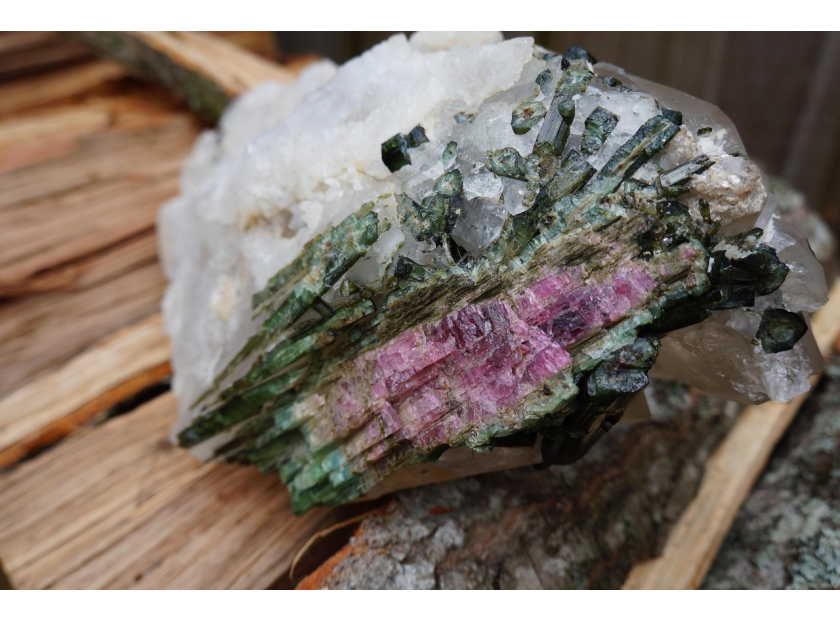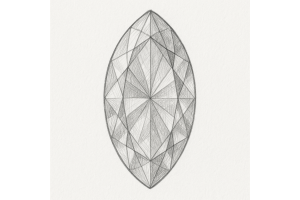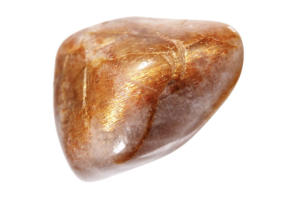GBP
/
GBP
/
Shipping to:
Currency:
Tourmaline is a captivating gemstone cherished for its dazzling array of colours and unique properties.
Whether you're a collector, jeweller, or simply an admirer, ensuring the authenticity of your tourmaline is essential.
This guide will walk you through the key methods to determine if your tourmaline is genuine.
Understanding Tourmaline
Tourmaline is a crystalline silicate mineral that comes in a spectrum of colours, from deep blacks to vibrant pinks and greens.
Its diverse hues and striking appearance make it a favourite in jewellery design.
For those interested in unique and vibrant designs, check out gemstone engagement rings.
The Importance of Authenticating Tourmaline
Identifying genuine tourmaline is crucial for several reasons:
- Financial Investment: Authentic tourmaline holds significant value, whereas imitations are considerably less valuable.
- Ethical Considerations: Purchasing real tourmaline supports ethical mining practices and ensures you're not inadvertently supporting counterfeit markets.
If you're considering alternatives, explore lab-grown diamonds vs gemstones to make the right choice.
Methods to Identify Genuine Tourmaline
Examining Colour and Pleochroism
Tourmaline exhibits pleochroism, meaning it can display different colours when viewed from various angles.
To test this:
- Rotate the Stone: Observe the gemstone under a consistent light source, rotating it slowly. Genuine tourmaline will show variations in colour intensity or even different colours.
- Use a Light Source: Shine a light through the stone. Authentic tourmaline may reveal subtle colour changes, especially in stones like black tourmaline, which can show brownish hues under strong light.
Assessing Hardness
Tourmaline ranks between 7 and 7.5 on the Mohs hardness scale, indicating good scratch resistance.
To test:
- Scratch Test: Gently attempt to scratch an unnoticeable area of the stone with a steel knife. Genuine tourmaline should not scratch easily.
For a comparison of durability between gemstones, consider reading about lab-grown diamonds vs gemstones.
Inspecting for Inclusions and Striations
Natural tourmaline often contains inclusions and distinct growth patterns:
- Use a Jeweller’s Loupe: Under magnification, look for internal characteristics such as thread-like inclusions or gas bubbles. These are common in natural stones.
- Check for Striations: Genuine tourmaline crystals typically have parallel striations along their length.
Conducting a Specific Gravity Test
Tourmaline has a specific gravity ranging from 2.82 to 3.32:
- Weight Comparison: While this test requires precise instruments, comparing the weight of your stone to a known sample can provide clues about its authenticity.
Seeking Professional Evaluation
If you're uncertain about your assessments:
- Consult a Gemologist: Professionals can perform advanced tests, such as refractive index measurements and spectroscopic analysis, to confirm authenticity.
- Obtain Certification: Reputable gemological laboratories can provide certification, offering peace of mind regarding your gemstone's authenticity.
Recognising Common Imitations and Treatments
Be aware of common substitutes and enhancements:
- Glass and Synthetic Stones: Some imitations are made of coloured glass or synthetic materials. These often lack the hardness and inclusions characteristic of natural tourmaline.
- Heat Treatment and Irradiation: Some tourmalines undergo treatments to enhance colour. While not necessarily indicative of a fake, it's essential to be informed about any treatments, as they can affect value.
For more insights on gemstone formations, you might find this article on how and where gemstones and diamonds are formed helpful.
Purchasing Tips for Authentic Tourmaline
To ensure you're buying genuine tourmaline:
- Choose Reputable Dealers: Purchase from established and trustworthy jewellers or gemstone dealers. Explore a variety of gemstones to find the perfect piece.
- Request Documentation: Ask for any available certificates of authenticity or details about the stone's origin and any treatments.
- Be Cautious of Deals That Seem Too Good to Be True: Exceptionally low prices can be a red flag for counterfeit or misrepresented stones. If you're considering unique options, check out non-traditional engagement rings.
FAQs About Real vs Fake Tourmaline
Can tourmaline change colour?
Yes, some tourmalines exhibit pleochroism, displaying different colours when viewed from various angles.
Is synthetic tourmaline valuable?
While synthetic tourmaline can be visually appealing, it doesn't hold the same value as natural tourmaline due to its artificial origin.
What is the rarest type of tourmaline?
Paraíba tourmaline, known for its neon blue to green hues, is among the rarest and most valuable varieties.
How do I clean my tourmaline safely?
Clean tourmaline with warm, soapy water and a soft brush.
Avoid ultrasonic cleaners and harsh chemicals, as they can damage the stone.
For other jewellery pieces, such as diamond wedding rings, consult specific care guidelines.








